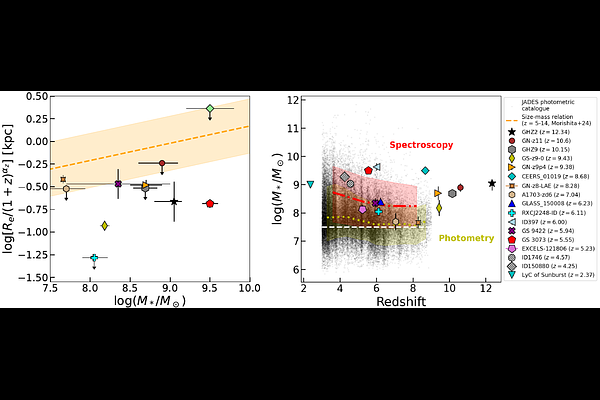Connecting JWST discovered N/O-enhanced galaxies to globular clusters: Evidence from chemical imprints

Connecting JWST discovered N/O-enhanced galaxies to globular clusters: Evidence from chemical imprints
Xihan Ji, Vasily Belokurov, Roberto Maiolino, Stephanie Monty, Yuki Isobe, Andrey Kravtsov, William McClymont, Hannah Übler
AbstractRecent JWST observations have revealed a growing population of galaxies at $z>4$ with elevated nitrogen-to-oxygen ratios. These "N/O-enhanced" galaxies (NOEGs) exhibit near- to super-solar N/O at sub-solar O/H, clearly deviating from the well-established scaling relation between N/O and O/H observed in local galaxies. The origin of this abundance anomaly is unclear. Interestingly, local globular clusters also exhibit anomalous light-element abundances, whose origin remains debated. In this work, we compare the chemical abundance patterns of 22 known NOEGs at $0\lesssim z\lesssim 12$ -- primarily discovered with JWST -- to those observed in local globular clusters. We find striking similarities in the abundances of C, N, O, Fe, and He between the two populations. The similar abundance patterns support the scenario in which globular cluster stars formed within proto-cluster environments -- similar to those traced by NOEGs -- that were self-enriched. Indeed, the enhancement in N/O in early galaxies appears to be only found in dense stellar environments with $\Sigma _{\star}\gtrsim 10^{2.5}~M_\odot~{\rm pc^{-2}}$, as expected for the progenitors of globular clusters in the Milky Way, and similar to those of star clusters identified in strongly lensed high-redshift galaxies. Furthermore, we find a tentative positive correlation between N/O ratios and stellar mass among NOEGs. The apparent high occurrence rate of NOEGs at high redshift is consistent with the picture of cluster-dominated star formation during the early stages of galaxy evolution. Measuring chemical abundances across diverse stellar environments in high-redshift galaxies will be crucial for elucidating the connection between NOEGs and globular clusters.